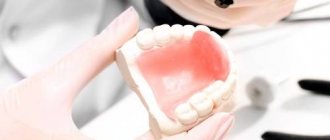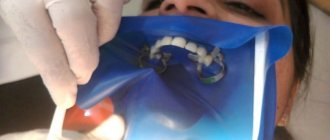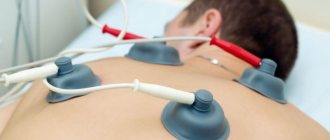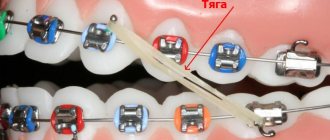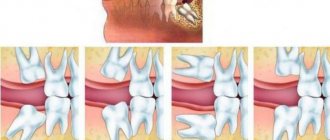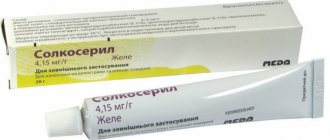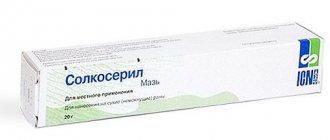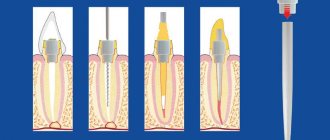Not only the oral cavity, but also orthopedic structures need proper cleaning. This is important for people who are indicated for the installation of a plate (retainer). The fact is that if hygiene is not observed, pathogenic microorganisms accumulate on the surface of the structure, causing infectious diseases and an unpleasant odor.
In addition to cleaning, a removable retainer requires careful use - a special container is provided for its storage. Caring for fixed plates also has its own specifics.
What are plates?
The standard dental plate is a simple design, which consists of a plastic base and several metal hooks with which it is attached to the teeth. In addition, each plate has a special fixing arch, which, through its pressure, affects the position of the dentition.
There is a screw inside these plates. It holds the two halves of the artificial sky together, leaving a gap between them. Throughout the entire wearing period, this screw is tightened or tightened from time to time. In this way, it is possible to correct the location of the fixing arch and, thereby, align the desired area of the dentition or an individual tooth.
Take time to cleanse in the evening
At work or at university, it is difficult to clean your teeth efficiently, so once or twice a day you need to do a thorough cleaning using brushes. Each brush must be placed under the arch and the interdental spaces and the space under the arch must be cleaned. But this is only relevant for those who wear braces.
To clean braces, a brush with a brush is useful; when treating aligners, a regular or electric brush is sufficient.
It’s easier with aligners: you can brush your teeth with an ultrasonic electric toothbrush. They often have a timer that measures the required 2 minutes. To make sure that your teeth are clean, you can use an elixir with the function of “revealing” plaque - as a rule, after such a rinse, you have to brush your teeth again.
For convenience and comfort, all orthodontic patients can have an irrigator at home - a device that cleans teeth with a thin stream of water under pressure. Water literally “knocks out” all the remaining food from hard-to-reach places and massages the gums, which is useful not only during orthodontic treatment, but in general always.
An irrigator helps keep your teeth perfectly clean
What problems do plates help with?
Plates are the simplest orthodontic instrument. Accordingly, they are used to solve minor defects in bite or position of teeth in the dentition. The standard case when a patient is prescribed to wear such a device is incorrect placement of the incisors. In this case, the structure is made in such a way that the main pressure falls on the desired tooth.
Another defect, which is a prerequisite for using this method, is abnormal expansion or narrowing of the jaw. In this case, the patient may experience the appearance of a gap between the teeth. In this case, the structure is adjusted so as to put pressure on the entire plane of the dentition.
A dental plate is also prescribed in other cases when slight curvatures of an individual tooth or dentition have been noticed in a child or adult.
When should you put a plate on your teeth?
Dental plates are often prescribed for children. Their teeth are more pliable, which means correction of defects is easier. If a child has noticed any irregularities in the location of the dentition, it is recommended to install a plate as soon as possible. There is no need to rush only if the child’s jaw is not yet fully formed, that is, not all teeth have fully grown. In this case, the plate may cause more harm than good and negatively affect the position of the unformed tooth.
Despite the fact that the effect of the technique is greater in childhood, they can also be prescribed for adults. Most often this happens in cases where the curvatures are purely aesthetic in nature and are minor. Typically, this method is used to correct minor malocclusions in adults. If the violations are more serious, a plate is unlikely to solve them. In such cases, it is better to give preference to braces or other modern techniques.
Indications for use
Whether children need a record should be decided by the doctor at the appointment. Parents need to point out the problem if there is one: the child sucks his finger, chews something, sleeps with his mouth open, etc. After an examination, the doctor recommends the product for use or not - depends on the situation.
Considering that vestibular plates are completely safe, you can safely ask for their appointment. But it is important to use them under the supervision of a specialist: you need to choose the right model, put it on correctly, etc. Errors in wearing can cause a crooked bite.
The main situations when doctors recommend purchasing a record for children :
- the child constantly chews or sucks fingers or foreign objects;
- the baby cannot refuse the pacifier, is capricious, replaces it with his finger;
- there is a habit of sleeping with the mouth open, nasal breathing is poorly developed;
- malocclusions were detected (especially the open type), etc.
Advantages and disadvantages
The main advantage of the record is its low price. Anyone can afford to use this method by contacting any nearest dental clinic. This design is made from budget materials, due to which its price always remains reasonable. In addition, the installation procedure itself does not require much time and effort. This allows you to save significantly on it.
A big plus is that the plate does not have any negative effect on tooth enamel. The materials used for its manufacture do not react with the tooth surface, which means they leave it completely healthy. In addition, the brushing process itself with a plate allows you to completely brush the entire surface of the tooth, which cannot be done when using braces. Thus, after the end of the treatment period, additional teeth cleaning or whitening is not required.
As for the disadvantages, in this case we can highlight the following:
- The plate is not able to solve significant defects in the dentition. It is used only for the correction of minor curvatures.
- Wearing the plate in the early stages may cause discomfort for the patient due to its large size. However, over time, a person gets used to it and stops noticing the structure in his mouth.
- In the first days of using the plates, minor speech defects may be observed, which completely disappear over time.
Often, after several weeks of wearing the structure, the patient completely gets used to it, and it does not bring him any discomfort. In addition, he can always turn to a specialist to eliminate certain design flaws in order to make it as convenient as possible for use.
Living with a stoma: instructions for dummies
What will the stoma look like and how will it feel after the operation? The first days after surgery can be difficult. A colostomy bag (urine bag) will be taped to your abdomen around the stoma and you will have a lot to learn. Now is the time to get to know your stoma.
What does she look like after surgery?
When you come to your senses after surgery, you will find your first colostomy bag on your stomach. It will likely be clear to make it easier for medical professionals to monitor the condition of your stoma. You may also be given IVs and drains. This is completely normal, and when no longer necessary, they will be removed.
- Your stoma
Your stoma will be moist, pinkish-red in color, and should protrude above the surface of your abdomen (although quite often stomas are also at skin level or below). The stoma may be quite swollen at first, but gradually, usually 6–8 weeks after surgery, it will shrink in size. The stoma is reddish in color because it is a mucous membrane just like the lining of the mouth. The stoma does not have any sensation, so touching it is painless. During treatment, the stoma may bleed a little, especially at first, but this is quite normal and should stop soon.
Your stoma will begin to function soon after surgery, usually within a few days. At first, it will release a watery fluid with a strong odor because your bowels haven't been functioning for a while. However, there is no need to worry - as you return to a balanced diet, the consistency of your stool will become slightly thicker and the odor will decrease. Your doctor will advise you on how to eat properly.
It is also possible that some gas will be noisily released from the stoma at first - this is completely normal. You may often feel the urge to have a bowel movement as before. This is normal and should go away with time. If the anus is preserved, a small amount of mucus may be released from it, but this problem can be solved.
- Urostomy
If you have had a urostomy removed, it will begin to function immediately after the operation. There will be a catheter in the urostomy for the first seven to ten days. At first, the urine may be reddish in color, but soon everything will return to normal.
How to deal with swelling or sticking of the walls of the bag
Bloating occurs when gas accumulates in the colostomy bag, i.e. the bag inflates like a balloon. Many colostomy bags are equipped with carbon filters that remove excess gas from the bag and neutralize odor. Insufficient filter efficiency or damage to the filter by moisture and feces can lead to the accumulation of gases in the colostomy bag.
- How to prevent swelling of the bag?
The best way to prevent pouch bloating is to minimize the amount of gas your digestive system produces. To do this, chew your food thoroughly and do not consume foods and drinks that cause increased gas formation. For example: nuts, beans, carbonated soft drinks or wine.
If you use one-piece drainable or two-piece colostomy bags, then when the bag swells, excess gas can be released in the toilet. Timely replacement of the colostomy bag can also prevent swelling of the bag. Finally, it may be worth trying a different colostomy bag with a more efficient filter.
The sticking of the bag walls occurs when a vacuum forms inside the bag. Clumping causes feces to accumulate at the top of the bag, which can damage (block) the filter. In this case, the bag may come off.
- How to prevent the walls of the bag from sticking together?
Before gluing the colostomy bag, inflate the bag slightly to prevent a vacuum from forming. You can also drop oil or lubricant into the colostomy bag, which will make the walls of the bag slippery and help stool quickly fall to the bottom of the bag.
Skin irritation around the stoma
The skin around your stoma should look the same as other parts of your body. Immediately after peeling off the colostomy bag, the skin may turn slightly red, but if its color does not return, this means that the skin is damaged.
What should I do?
- Peel off the colostomy bag (urine bag) and inspect the plate. Is the plate damaged by feces or urine?
- Is the damage or irritation to the skin around the stoma the same as what you see on the plate?
- How hermetically sealed is the colostomy bag? If the colostomy bag does not fit tightly to the skin, or if the hole in the adhesive plate is larger than the size of your stoma, stool or urine from the stoma may come into contact with the skin, causing irritation. Determine if the size and shape of your stoma matches the size and shape of the template you are using. Use the protective covering of the adhesive pad as a template and, if necessary, adjust the hole in the adhesive pad so that it exactly matches the size and shape of the stoma. Before gluing the colostomy bag, you must use a skin cleaner.
- How is your stoma located relative to the surface of your abdomen? Is it above, level or below the surface of the skin? If your stoma is level or below the surface of the skin or in a deep crease, you may need a different type of colostomy bag and accessories. Ask your ostomy care professional to find a product that is more suitable for you.
- Is the adhesive plate damaged? If this is the case, then you may need to change your colostomy bags (urine bags) more often. Try changing colostomy bags (urine bags) more often or consider using adhesive sheets that are more resistant to erosion.
If skin irritation is due to other reasons, consult a specialist.
People have different physiques - colostomy bags (urine bags) are also different
After ostomy surgery, your body shape may change for a number of reasons. For example:
- weight gain or loss as you recover from the illness that led to surgery;
- the appearance of folds or scars on the skin around the stoma;
- formation of parastomal hernia.
If your body shape has changed, you need to make sure that the colostomy bag (colostomy bag) still fits you.
Select a suitable colostomy bag (urine bag) For proper stoma care, it is necessary that the colostomy bag (urine bag) be hermetically glued to the skin. For example, if the area around the stoma becomes not flat, but retracted, then perhaps convex colostomy bags (uropods) should be used. You may also need additional accessories.
Types of plates for teeth
Plates for teeth are divided into two main types:
- removable;
- permanent.
The differences lie in the specifics of wearing the plates. Removable structures can be removed at any convenient time when the patient needs it. For example, for more comfortable chewing of hard food or self-tightening of the adjusting screw. However, dentists do not recommend doing this too often, since the effect of such treatment may be minimal. It is especially important to leave the dental guard in your mouth while you sleep. In general, the period of wearing the structure should be at least 22-23 hours a day.
As for permanent ones, they are installed and removed exclusively by a specialist. Such devices are used for more serious dental defects. They are also often prescribed to young children, who may not listen to the doctor’s recommendations and independently remove the plate for a long time, for example, to go to school.
Manufacturing and installation
Each of the plates is made exclusively to individual order, based on the specific structure of the dentition of each individual patient. To do this, the specialist makes an impression, which will become the basis for the manufacture of the structure. The patient may first be prescribed a dental x-ray, which will reveal any hidden damage that could also affect the general condition of the jaw.
When the cast is ready, it takes a little time to make a preliminary layout. Next, the patient is given an appointment to try it on. If the design is suitable and the person feels comfortable with it, a real plate is made for him.
The structure is put on the dentition directly at the doctor’s appointment so that the specialist can set the optimal pressure level using a screw. Next, you need to visit a doctor at least once a month to correct the pressure on the dentition.
Plate efficiency
It is important to understand that the effectiveness of a device such as a dental plate depends on many factors. The first is the degree of damage to the dentition. The smaller the curvature, the greater the chances of ultimately getting a high-quality result from such treatment. The second is the age at which the structure was installed. You should start using a plate to straighten your teeth as early as possible.
In addition, the final effect also depends on how correctly the patient used the device - how often he removed it, how he cleaned it and tightened the screw. In each specific case, it is very important to correctly follow the recommendations of the attending physician, because only then the result will be truly positive.
How long should I wear the plates?
The period of wearing the plates varies in each specific case. It is often around one to two years. However, there are cases when this time is not enough to eliminate the defect. In this case, the patient is extended the treatment period, or some other methods are prescribed.
Have it professionally cleaned
Ultrasonic cleaning is not recommended if braces are installed - ultrasound can weaken the adhesive bond between the braces and the teeth. But Air Flow for fixed systems is completely safe. Such cleaning once every 4-5 months will help the entire treatment period pass without plaque, which provokes caries. Those who wear aligners can have both Air Flow and ultrasonic cleaning.
Plaque appears in all people, even in those who brush their teeth very carefully. Therefore, such cleaning is recommended to everyone approximately once every 6 months, and if indicated, a little more often.
When wearing braces and aligners, you should periodically undergo professional cleaning at the clinic.
Plate care
Plates for teeth straightening, unlike braces, do not require special care. You don't need to buy any special tools for them. It is enough to remove such a structure during cleaning and also clean it separately. To do this, you can use a regular toothbrush and toothpaste. It is important to do this carefully so as not to damage the parts or change the tension of the screw.
If the patient wears a permanent structure, it should also be cleaned during oral hygiene. You can also use an additional rinse to get rid of bacteria in the spaces between the plate and the teeth.
To extend the life of the structure, it is not recommended to eat too hard foods, such as nuts, without first removing the structure from your mouth. It is also better not to drink very hot drinks or eat sweets with dyes. In this case, stains may appear on the dental plate.

